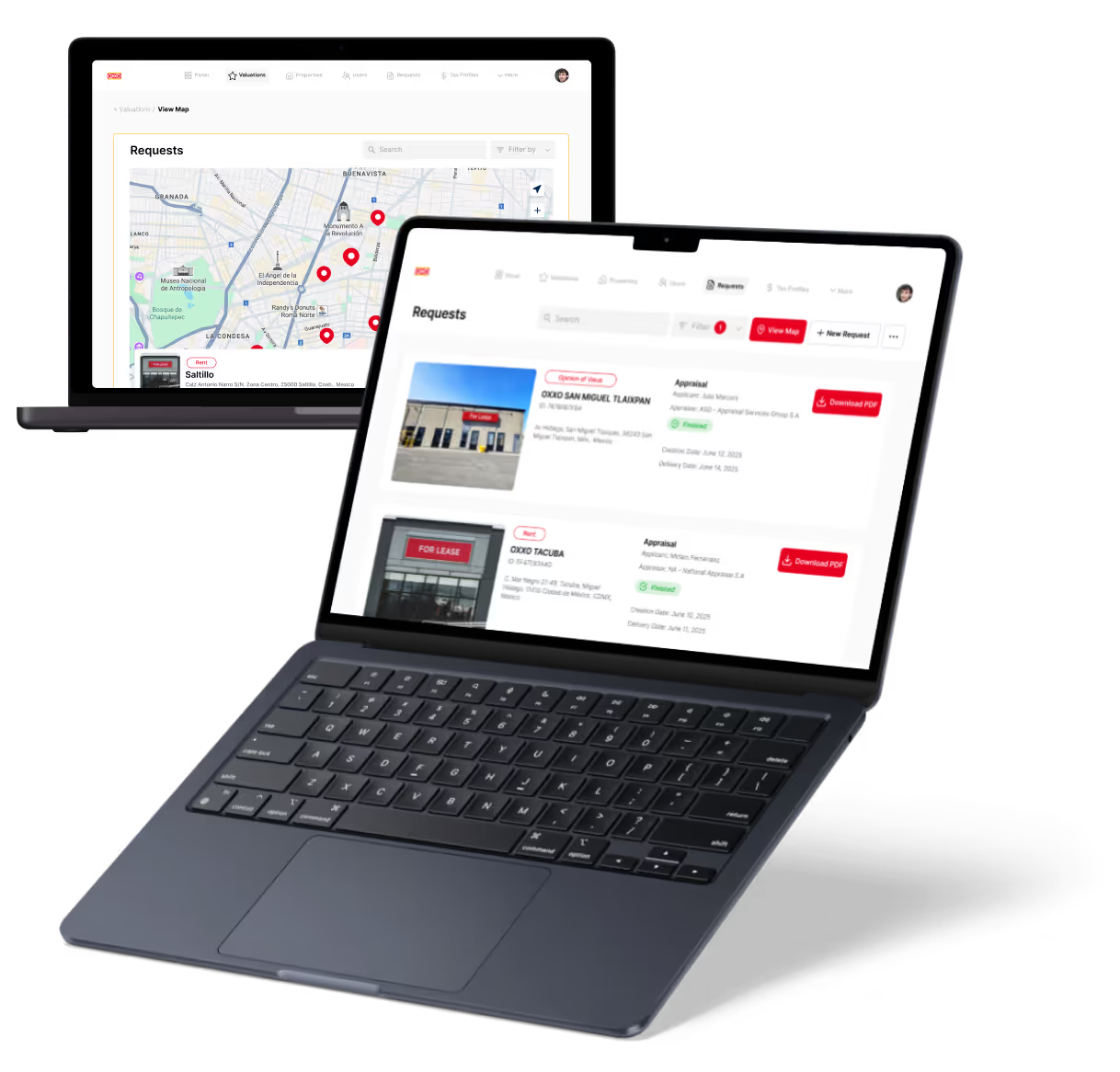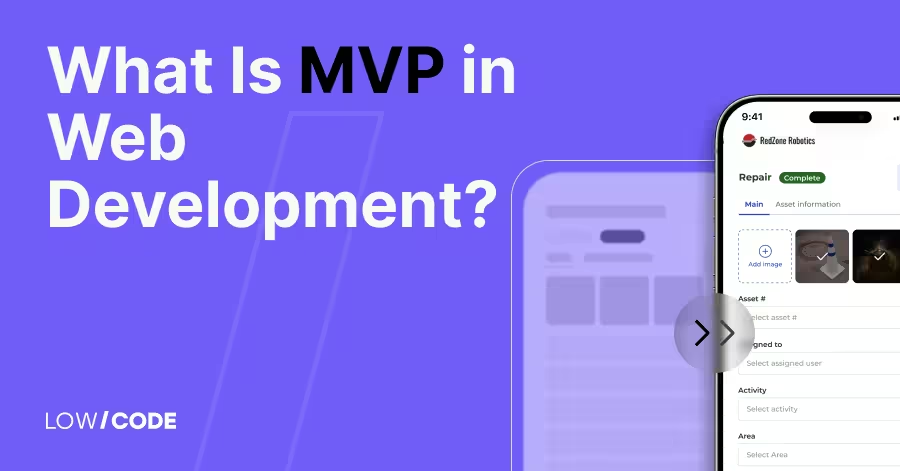Building an MVP? Avoid These 15 Common Mistakes
20 min
read
Building an MVP? Avoid these 15 common mistakes that can lead to failure. Learn key challenges and solutions to launch a successful MVP

Launching a Minimum Viable Product (MVP) is a smart way to test your business idea before investing heavily. However, the reality is harsh—about 90% of startups fail, and one in three fails because they build something no one wants (according to CB Insights). Even among MVPs, failure rates are high when key challenges aren’t addressed early.
An MVP helps businesses test their ideas with minimal resources, but poor execution can lead to wasted time and money. Common issues like lack of market research, unclear goals, and ignoring user feedback often turn promising ideas into failures. If these challenges aren’t tackled from the start, startups risk launching products that don’t solve real problems.
The success of an MVP depends on how well you identify and overcome these obstacles early. Understanding the pitfalls can help you build a product that grows into a thriving business.
Common MVP Development Challenges and How to Overcome Them
We have helped hundreds of founders launch their MVPs faster using no-code platforms. Here are 15 common mistakes you need to avoid.
Unclear Vision and Objectives
Having a clear product vision is essential for a successful MVP. Your vision sets the foundation for development, ensuring every decision aligns with a specific goal. Without it, teams often build features that don’t serve the core purpose, leading to wasted resources and confusion.
Unclear objectives can also lead to scope creep, where unnecessary features are added, making the MVP bloated and complex. This results in delayed launches, higher costs, and a product that doesn't meet the main user needs. Additionally, misalignment between stakeholders—founders, developers, and investors—can cause conflicts, slowing down decision-making and leading to inconsistent execution.
Solution:
Start by defining SMART goals (Specific, Measurable, Achievable, Relevant, and Time-bound). These ensure your objectives are well-structured and trackable.
Next, create a clear product roadmap that prioritizes essential features for the MVP phase. This roadmap should highlight key milestones, expected outcomes, and a phased rollout strategy.
Inadequate Market Research and Validation
Building an MVP without validating demand is one of the biggest mistakes founders make. If you don’t confirm that people actually need your product, you risk spending months developing something that no one wants. Many startups fail because they assume their idea is great without testing it in the real world.
When you rely on incorrect assumptions, you may build features that seem useful but don’t solve real problems. This leads to low adoption rates, wasted resources, and eventually, failure. Without proper research, you might also miss better opportunities or fail to understand what makes competitors successful.
Solution:
Before development, invest time in market research. Start by conducting surveys to gather feedback from potential users. Customer interviews can help you understand their pain points, needs, and behaviors. Additionally, analyze your competitors—see what they offer, how they attract users, and where they fall short.
You can also leverage communities like Indie Hackers to validate your idea. Indie Hackers is a platform where founders share their startup journeys, discuss challenges, and test ideas with real audiences. Engaging in such communities allows you to refine your MVP based on real feedback, reducing risks and increasing the chances of success.
Undefined Target User Personas
Defining the right audience is critical for a successful MVP. If you don’t know who your ideal users are, you risk building a product that doesn’t solve their problems. Many startups fail because they try to appeal to everyone, but end up attracting no one. A well-defined target user helps you create features, messaging, and marketing strategies that truly resonate.
When you miss the right user segment, your MVP may struggle with poor adoption. Without a clear audience, you could be spending time and money marketing to people who don’t need your solution. This leads to low engagement, poor retention, and high churn rates. A product built for the wrong users will always face challenges in growth and profitability.
Solution:
Start by creating detailed user personas based on market data. A user persona is a fictional representation of your ideal customer, including their age, job, pain points, goals, and behaviors. Gather insights through customer interviews, surveys, and competitor analysis to understand what your audience truly wants.
For example, building an MVP for an AI-powered contract analysis tool. If you assume your audience is "businesses that deal with contracts," your product might lack focus. But if you define a user persona like David, a 35-year-old legal consultant handling 20+ contracts weekly, you can prioritize features like automated clause detection, risk flagging, and integration with legal databases.
By defining clear user personas, you ensure your MVP is built for the right people—leading to better adoption, higher satisfaction, and a stronger foundation for long-term success.
Improper Feature Prioritization
One of the biggest mistakes in MVP development is overloading it with unnecessary features. Many founders worry that a simple product won’t attract users, so they try to include everything at once. This often leads to a bloated MVP that takes too long to build, costs more than expected, and confuses users with excessive functionality.
For example, if you wanted to create the best website chat widget possible, your MVP shouldn’t try to include AI and multi-language support right away. Instead, you should focus on core features like real-time messaging and validate whether users find it valuable before expanding.
Poor feature prioritization increases development costs and delays the launch. Instead of testing a core idea quickly, teams spend months refining features that may not even be useful. This not only wastes resources but also makes it harder to gather feedback and iterate efficiently.
Solution:
To avoid this, use feature prioritization frameworks like:

- MoSCoW Method – Categorizes features as Must-have, Should-have, Could-have, and Won’t-have.
- Kano Model – Helps distinguish between basic needs, performance features, and delight factors.
- RICE Framework – Scores features based on Reach, Impact, Confidence, and Effort.
By using these frameworks, you can focus on the core features that define your MVP, ensuring a faster launch, lower costs, and better user engagement.
Read more about how to prioritize features for your MVP.
Inappropriate Development Approaches
Choosing the wrong development approach can make or break an MVP. Many founders assume they need a fully coded solution from day one, but traditional development is often slow, expensive, and resource-heavy. If you spend months coding an MVP before validating demand, you risk wasting time and money on a product that users may not want.
Traditional Development vs. No-code
- Traditional Development involves writing custom code, offering full flexibility and scalability. However, it requires more resources, higher costs, and longer development cycles.
- No-code Platforms like Bubble, Glide, or FlutterFlow let us build functional MVPs faster and cheaper without any coding. With no-code platforms, you can create almost any type of business app with advanced features, while greatly reducing costs and time to market.
This approach lets you validate your idea quickly and make changes based on real user feedback. If your idea becomes popular, you can always switch to custom development later. Choosing the right approach helps you test your product efficiently and make the most of your resources.
Hiring the Wrong Development Team
Hiring the wrong development team can lead to expensive inefficiencies and delays in launching your MVP. Many startups fail because they work with teams that lack the necessary skills, experience, or alignment with their vision. If developers don’t fully understand your product’s goals, they might create unnecessary features, misinterpret requirements, or struggle to deliver on time.
Outsourcing MVP development to inexperienced teams also carries risks. Some agencies or freelancers promise quick delivery but lack expertise in MVP development, leading to poor scalability, inefficient architecture, or technical debt. Without proper guidance, you may end up with a product that needs costly rework before it can scale.
Solution:
Work with experienced no-code agencies that specialize in MVP development. At LowCode Agency, we've built over 330 applications for startups and businesses across several industries.
Our expertise with platforms like Bubble, Glide, FlutterFlow, and Webflow allows us to choose the right no-code platform for your specific needs while implementing best practices for scalable, maintainable applications.
Technical Complexities, Including Integration Challenges
Many MVPs need third-party services and API integrations for features like payments, authentication, and data processing. However, if these integrations aren't managed well, they can become major problems. Poorly implemented APIs can lead to performance issues, security risks, and unexpected downtime, which can frustrate users and slow down adoption.
Another challenge is scalability. If the architecture isn't well-planned from the beginning, your MVP may have trouble handling more traffic and data as your user base grows. Many startups encounter obstacles when they find out their initial tech stack wasn't designed for long-term growth, leading to costly redevelopment.
Solution:
Work with expert teams that consistently build using established best practices.
At LowCode Agency, we design MVPs with scalability in mind from day one, implementing clean data structures and efficient workflows that can grow with your user base. Our experience across hundreds of projects means we've already solved most common integration challenges.
Scalability and Security Concerns
Many startups focus on launching their MVP quickly but forget about scalability. If your product gains traction and more users join, a poorly planned MVP can crash under pressure. Without a scalable foundation, slow load times, frequent downtime, and limited storage can become major issues, forcing costly fixes or complete redevelopment.
Security is another major concern. Rushed development often leads to weak authentication, poor data protection, and vulnerabilities that hackers can exploit. Startups handling payments, user data, or sensitive information must prioritize security from the start. Ignoring it can result in data breaches, lost user trust, and legal trouble.
Solution:
No-code platforms manage security independently, ensuring they follow best practices like data encryption, authentication protocols, and secure hosting. When built using best practices, they also support scalability. For example, Bubble allows to add an external database, enabling your MVP to handle growth without performance issues.
By choosing the right approach, you can launch confidently without worrying about security gaps or system failures as your user base grows.
Resource Limitations (Time, Budget, Human Resources)
Many startups underestimate the time, budget, and team effort required to develop an MVP. Running out of resources before launch is a common reason why MVPs fail. If you don’t plan carefully, you might spend too much on development, leaving little for marketing, customer acquisition, and future improvements.
Another challenge is balancing speed vs. quality. Founders often rush development to launch quickly, leading to poor user experience, buggy features, and technical debt. On the other hand, spending too much time perfecting an MVP can delay market entry, allowing competitors to take the lead. Striking the right balance is critical to success.
Solution:
As we discussed earlier, no-code platforms significantly cut down the time and cost needed to create a functional MVP. What might take months and cost six figures with traditional development can often be built in 4-5 weeks.
This efficiency lets you use resources more strategically, focusing on user research and marketing instead of getting bogged down in complex technical implementation.
Inefficient Project Management
Poor project management is one of the biggest reasons MVPs face delays and budget overruns. Without clear planning and communication, teams struggle with missed deadlines, unclear priorities, and unnecessary revisions. When expectations aren’t aligned between founders, developers, and stakeholders, projects often go off track, leading to wasted time and resources.
Miscommunication can also cause feature creep, where unplanned features are added, making the MVP more complex than necessary. This increases development time, costs, and the risk of launching a product that doesn’t meet user needs. A structured, milestone-driven approach is essential to keeping development on schedule.
Solution:
At LowCode Agency, we've refined our project management approach through hundreds of successful MVP launches. Our milestone-driven development process breaks projects into clear, manageable phases with defined deliverables and regular check-ins.
We start with a comprehensive discovery phase to clearly define your vision and requirements. From there, we create a structured development roadmap with specific milestones for design, development, testing, and launch. This transparent approach ensures alignment throughout the project and provides predictable progress toward your goals.

Our collaborative workflow includes regular demos and feedback sessions, ensuring you're never in the dark about your project's status. This methodology maximizes efficiency while keeping development focused on your core business objectives and validation needs.
User Experience (UX) Design Challenges
Bad UX/UI design is one of the fastest ways to kill an MVP. Even if your product solves a real problem, users won’t stick around if it’s confusing, slow, or difficult to use. A poorly designed interface leads to frustration, low engagement, and high churn rates, making it hard to gain traction.
Many MVPs fail because of common UX mistakes, such as:
- Cluttered interfaces – Too many features crammed into the first version.
- Lack of clear navigation – Users struggle to find what they need.
- Poor mobile responsiveness – A design that doesn’t work well on all devices.
- No user feedback loops – No way for users to report issues or suggest improvements.
Solution:
To avoid these pitfalls, conduct user testing early and often. Gather feedback from real users to identify pain points and make improvements. Follow design best practices, such as keeping the interface simple, intuitive, and visually appealing. A well-designed MVP doesn’t just attract users—it keeps them engaged and encourages long-term adoption.
Quality Assurance Issues
Launching an MVP with too many bugs can ruin its chances of success. Users expect a functional product, even in its early stages. If your MVP is filled with crashes, broken features, and slow performance, early adopters will quickly abandon it, making it harder to gain traction.
Lack of proper testing impacts early adoption and creates a negative first impression. Many founders rush to launch without thorough quality assurance (QA), leading to frustrated users, poor reviews, and lost credibility. Fixing issues after launch can be costly and time-consuming, especially if they could have been caught earlier.
Solution:
At LowCode Agency, we follow a structured QA process to ensure a smooth and bug-free launch. Our project managers, developers, and, if needed, specialized QA personnel will conduct thorough testing. This includes:
- Functional testing – Ensuring all features work as intended.
- Usability testing – Checking for ease of use and intuitive design.
- Performance testing – Making sure the app runs smoothly under different conditions.
By thoroughly testing before launch, we minimize bugs, improve user experience, and boost early adoption, setting your MVP up for long-term success.
Challenges in Iterative Development Processes
One of the biggest challenges in MVP development is balancing speed with iteration. Startups need to launch quickly, but an MVP is not a final product—it requires continuous improvement based on user feedback and real-world data. Many founders struggle to find the right balance between releasing fast and making necessary adjustments without slowing down progress.
Another challenge is knowing when and how to pivot. If early user feedback suggests that the core idea isn’t working, sticking to the original plan can lead to failure. However, pivoting too early or too often can waste resources and confuse users. Founders need a data-driven approach to decide when to refine, expand, or completely shift their product direction.
Solution:
At LowCode Agency, we use an iterative development process that ensures founders can adjust their MVPs efficiently. We build in phases, gathering feedback after each milestone to make necessary improvements without delaying progress.
Our structured approach allows for quick iterations, controlled pivots, and continuous optimization—helping you launch faster while ensuring long-term product success.
By following a smart iteration strategy, you can refine your MVP without losing momentum or direction.
Ignoring Customer Feedback
When you ignore user opinions during MVP development, you miss the whole purpose of creating an MVP. Your early users give the most valuable insights into what works, what doesn't, and what they truly need. Ignoring their feedback often results in building a product that addresses theoretical problems instead of real ones.
Assuming which features users want without proper validation is a surprisingly common mistake. Founders often build based on their own preferences or what competitors offer, instead of checking these assumptions with actual users. This approach leads to wasted development resources and MVPs that fail to gain traction.
Solution:
To build a successful MVP, continuous feedback loops are essential. You should:
- Conduct surveys to gather insights directly from users.
- Hold user interviews to understand pain points and feature expectations.
- Use analytics tools to track behavior and identify what’s working.
Create a systematic approach for collecting, analyzing, and prioritizing feedback. Not all suggestions should be implemented, but each should be considered against your core value proposition and business goals.
This balanced approach ensures your MVP evolves based on real user needs while maintaining focus on your strategic objectives.
Managing Stakeholder Expectations
Unrealistic expectations can lead to dissatisfaction and derail an MVP before it even gets a chance to succeed. Founders, investors, and team members often have different ideas about what the MVP should include, how fast it should be built, and what success looks like. If expectations aren’t managed properly, frustration and misalignment can slow down progress.
Balancing investor and customer demands is another challenge. Investors may push for revenue-driven features, while early users need a simple, functional solution that solves their problems. Trying to satisfy everyone without a clear strategy often leads to feature creep, delays, and wasted resources.
Solution:
To avoid these issues, follow a structured approach:
- Define clear MVP goals aligned with business objectives.
- Set measurable success metrics to track progress and manage expectations.
- Use a phased rollout strategy to showcase incremental progress and maintain confidence.
- Involve stakeholders in feedback loops to ensure alignment and avoid last-minute surprises.
- Educate stakeholders on MVP principles to prevent unrealistic demands and unnecessary complexity.
By proactively managing expectations, you create a smoother development process, ensure stakeholder buy-in, and keep your MVP focused on delivering real value.
Final Thoughts
Many startups fail not because their ideas are bad, but because they overlook key challenges like unclear goals, poor market validation, feature creep, and ignoring user feedback. These issues can lead to wasted time, high costs, and a product that doesn’t gain traction.
Addressing these challenges early improves your MVP’s success rate. A structured approach ensures efficient development, proper testing, and continuous iteration based on real user insights. Focusing on scalability, security, and a strong user experience from the start can make all the difference.
An MVP isn’t just a test version—it’s the foundation of your future product. By planning carefully, validating ideas, and adapting based on feedback, you increase your chances of building a successful, scalable product that meets real market needs.
Hire LowCode Agency for Your Next Project
At LowCode Agency, we specialize in building scalable apps, stunning websites, and custom automation solutions tailored to your unique needs. Whether you're aiming to launch an MVP, automate workflows, or build a full-scale application, our team ensures a smooth and efficient development process.
We are the:
- Largest and leading Glide agency as a premium partner
- Silver-tier Bubble agency
Additionally, we specialize in:
With a proven track record of building different types of applications, our team of expert project managers, no-code developers, and designers is committed to delivering top results. We know how important speed and quality are, so we help businesses turn their ideas into reality, twice as fast and at half the cost of traditional development.
📌 Check out our case studies and book a free call to see how we can turn your vision into reality.
Created on
March 31, 2025
. Last updated on
June 23, 2025
.

FAQs
How do I ensure my MVP is successful?
What's the biggest mistake in MVP development?
How much should I budget for an MVP?
Can I build an MVP with a no-code platform?







%20(Custom).avif)








